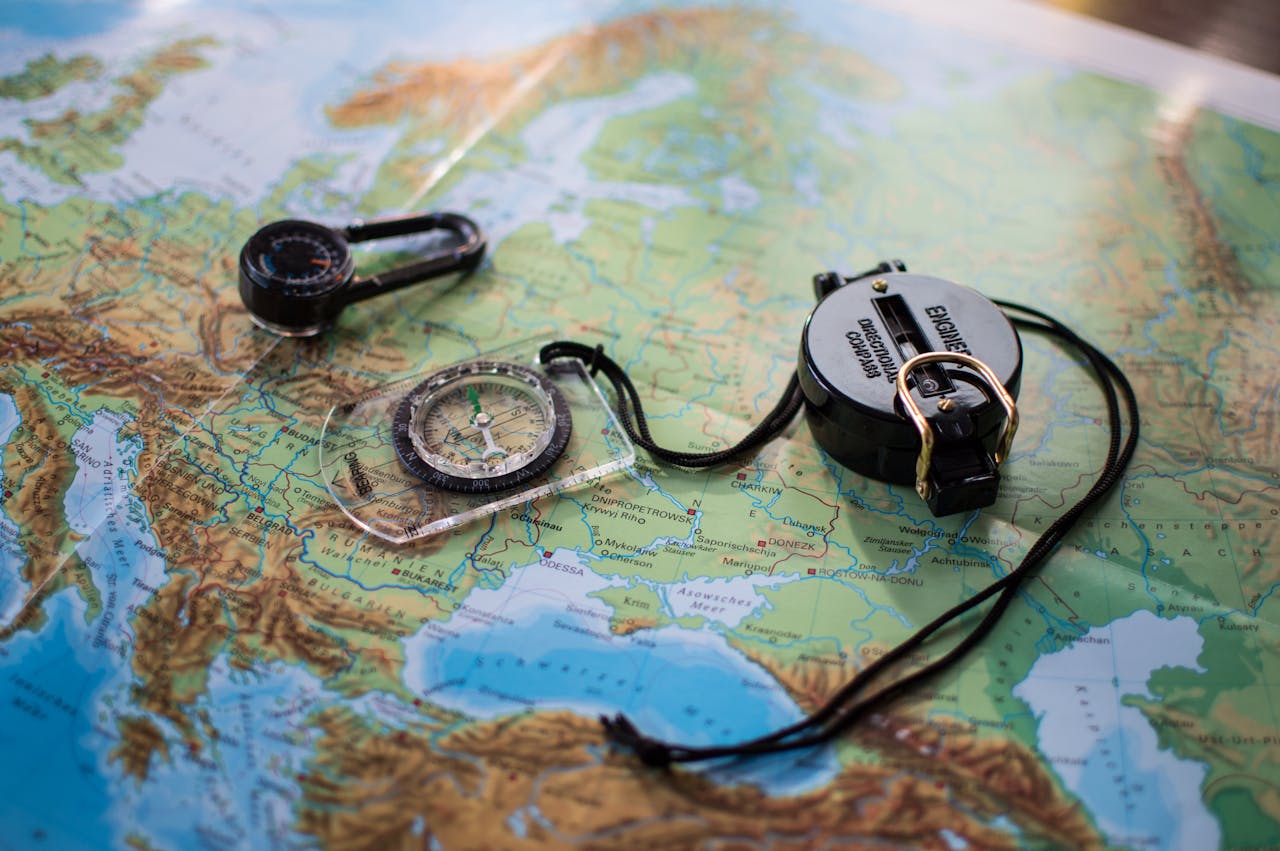Welcome to the innovative course “GIS and Python for Agricultural Applications.” This program explores the powerful combination of Geographic Information Systems (GIS) and Python programming, designed to transform agricultural practices. Agriculture, a key pillar of global development, is on the verge of a technological revolution, where GIS and Python can drive precision farming, optimize resources, and enable smarter decision-making. This course is tailored to professionals in agriculture, technology, and research, providing a hands-on approach to solving complex agricultural challenges with spatial data and programming.
Throughout this course, participants will gain a solid understanding of how GIS and Python contribute to agriculture, focusing on practical applications such as precision farming, crop monitoring, irrigation management, and resource optimization. With a mix of theory and case studies, participants will develop the skills to use spatial data analysis and automation tools to improve agricultural productivity and sustainability.
By the end of the course, you will have the knowledge and experience to apply GIS and Python in various agricultural domains, including crop management, climate analysis, and farm optimization. Join us as we explore the future of agriculture through the lens of GIS and Python technology.
Course Objectives:
- Develop skills to manage and analyze spatial data using GIS and Python.
- Implement precision farming strategies using GIS-based spatial analysis and Python tools.
- Optimize resource use, including water and land, through GIS and Python algorithms.
- Design decision support systems that utilize spatial data for effective agricultural management.
- Automate the creation of agricultural maps and GIS layers using Python scripting.
- Master data visualization techniques for interpreting complex agricultural data.
- Integrate remote sensing data with GIS and Python for enhanced agricultural monitoring.
- Develop customized geoprocessing tools to address specific agricultural tasks.
- Use GIS and Python for crop monitoring, yield forecasting, and disease prediction.
- Apply learned techniques to a comprehensive project, showcasing the integration of GIS and Python in agriculture.
Organizational Benefits:
- Streamline farm operations by utilizing GIS and Python for efficient data processing.
- Enable data-driven decision-making to enhance agricultural productivity and sustainability.
- Reduce costs through optimized resource management, such as water and fertilizers.
- Improve crop management strategies with advanced monitoring and analysis capabilities.
- Drive innovation by incorporating GIS and Python technologies into agricultural workflows.
- Develop tailored solutions with custom geoprocessing tools to enhance operational efficiency.
- Leverage remote sensing for real-time monitoring and analysis of agricultural conditions.
- Train your team to gain proficiency in GIS and Python, boosting productivity and skill development.
- Gain a competitive edge by adopting cutting-edge agricultural technologies.
- Contribute to sustainable agricultural practices by applying technology for better environmental stewardship.
Target Participants:
- Agricultural Managers and Advisors
- GIS Professionals working in Agriculture
- Python Developers in AgTech
- Farm Owners and Operators
- Agricultural Researchers and Scientists
- Environmental Consultants
- Data Analysts in Agricultural Sectors
- Professionals working with Remote Sensing in Agriculture
- Technology Innovators in Agriculture
Course Outline:
- Module 1: Introduction to GIS and Python in Agriculture
- Overview of GIS principles in the agricultural context.
- Introduction to Python programming for agricultural applications.
- Basics of using GIS to collect and analyze spatial data for farming.
- Python libraries commonly used in agriculture (e.g., Pandas, GeoPandas, Matplotlib).
- Case Study: Mapping agricultural lands and analyzing crop suitability.
- Module 2: Spatial Data Acquisition for Agriculture
- Introduction to remote sensing and its applications in agriculture.
- Understanding satellite imagery for crop monitoring and land use mapping.
- Using drones for precision agriculture data collection and image processing with Python.
- Case Study: Applying precision agriculture using satellite and drone data.
- Module 3: GIS Analysis for Crop Management
- Using GIS for monitoring crop health and growth.
- Implementing Python scripting for crop yield prediction and analysis.
- Soil mapping and analysis using GIS tools and Python.
- Case Study: Predicting crop diseases using spatial analysis and Python tools.
- Module 4: Water Resource Management in Agriculture
- Leveraging GIS for mapping and managing water resources in agriculture.
- Python tools for efficient irrigation planning and management.
- Optimizing water usage through GIS-based irrigation scheduling.
- Case Study: Improving water efficiency in agricultural systems using GIS and Python.
- Module 5: Agro-Climate Monitoring
- Integrating climate data with GIS for crop yield prediction.
- Using Python to analyze climate trends and their impact on agricultural production.
- Developing predictive models to assess the influence of weather on farming outcomes.
- Case Study: Enhancing climate-resilient farming practices with GIS and Python tools.
- Module 6: Supply Chain and Market Analysis
- Mapping agricultural supply chains using GIS tools.
- Analyzing market trends and agricultural logistics with Python and GIS.
- Optimizing supply chains using spatial data and Python algorithms.
- Case Study: GIS-based optimization of agricultural supply chain logistics.
- Module 7: Farm Planning and Decision Support
- GIS applications in farm layout and planning for better crop management.
- Developing decision support systems for farm operations with Python.
- Integrating GIS and Python for informed decision-making and resource allocation.
- Case Study: Implementing sustainable farm management using GIS and Python tools.
- Module 8: Integration of GIS with IoT for Smart Agriculture
- Introduction to IoT in agriculture and its role in data collection.
- Integrating IoT data with GIS using Python for real-time monitoring.
- Using GIS for geospatial data visualization from IoT sensors in the field.
- Case Study: Smart Agriculture: Integrating IoT, GIS, and Python for automated systems.
- Module 9: Advanced GIS Techniques for Agriculture
- Advanced spatial analysis and modeling in agriculture using GIS.
- Using Python for complex geospatial data processing and analysis.
- Building spatial models for farm management and crop planning.
- Case Study: GIS-based decision support system for agricultural planning.
- Module 10: Capstone Project
- Proposal development for GIS and Python-based agricultural projects.
- Guidance and mentorship for implementing capstone projects.
- Presentation and peer feedback on capstone project outcomes.
General Information:
- Customized Training: All courses can be tailored to meet the specific needs of participants.
- Language Proficiency: Participants should have a good command of the English language.
- Comprehensive Learning: Our training includes well-structured presentations, practical exercises, web-based tutorials, and collaborative group work. Our facilitators are seasoned experts with over a decade of experience.
- Certification: Upon successful completion of training, participants will receive a certificate from Stepsure Training and Research Institute.
- Training Locations: Training sessions are conducted at Stepsure Training and Research Institute centers. We also offer options for in-house and online training, customized to the client’s schedule.
- Flexible Duration: Course durations are adaptable, and content can be adjusted to fit the required number of days.
- Onsite Training Inclusions: The course fee for onsite training covers facilitation, training materials, two coffee breaks, a buffet lunch, and a Certificate of Successful Completion. Participants are responsible for their travel expenses, airport transfers, visa applications, dinners, health/accident insurance, and personal expenses.
- Additional Services: Accommodation, pickup services, freight booking, and visa processing arrangements are available upon request at discounted rates.
- Equipment: Tablets and laptops can be provided to participants at an additional cost.
- Post-Training Support: We offer one year of free consultation and coaching after the course.
- Group Discounts: Register as a group of more than two and enjoy a discount ranging from 10% to 50%.
- Payment Terms: Payment should be made before the commencement of the training or as mutually agreed upon, to the Stepsure Training and Research Institute account. This ensures better preparation for your training.
Contact Us:
- Email: info@stepsureresearchinstitute.org
- Phone: +254 723 482 495
- Website: www.stepsureresearchinstitute.org








